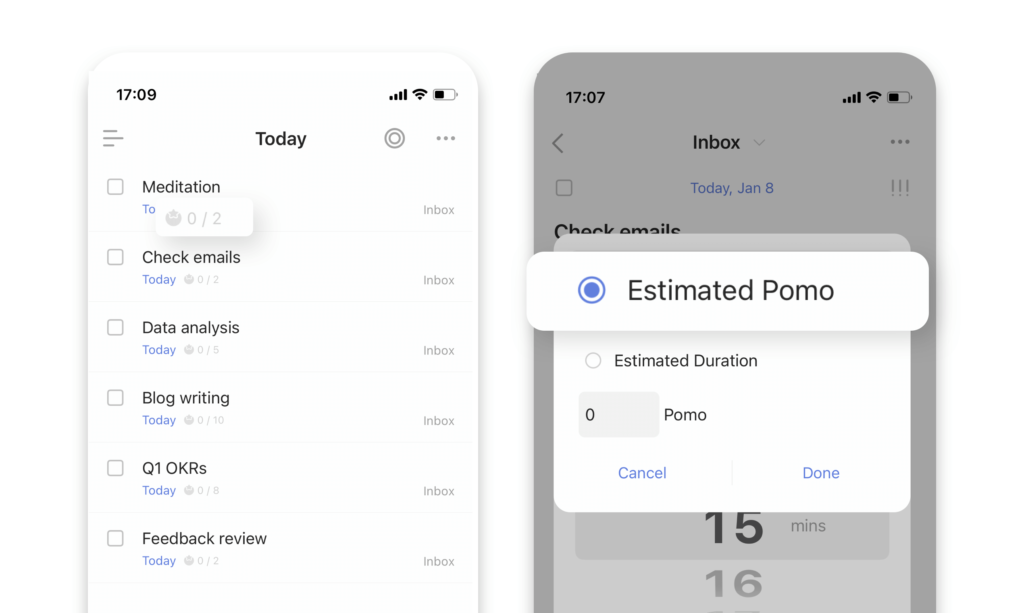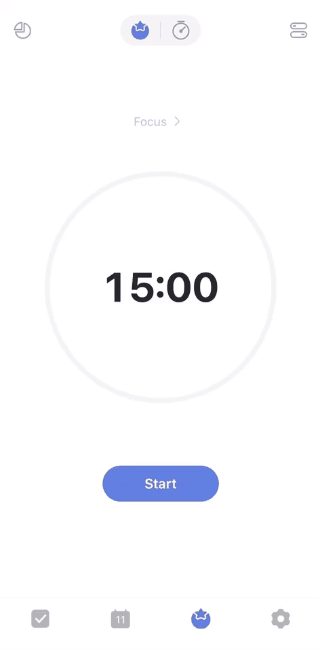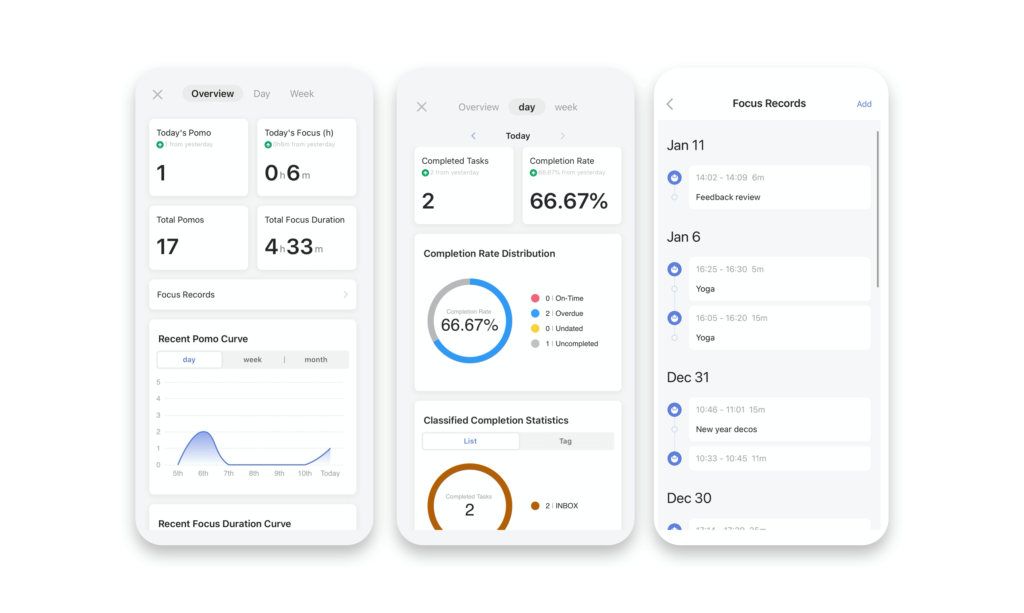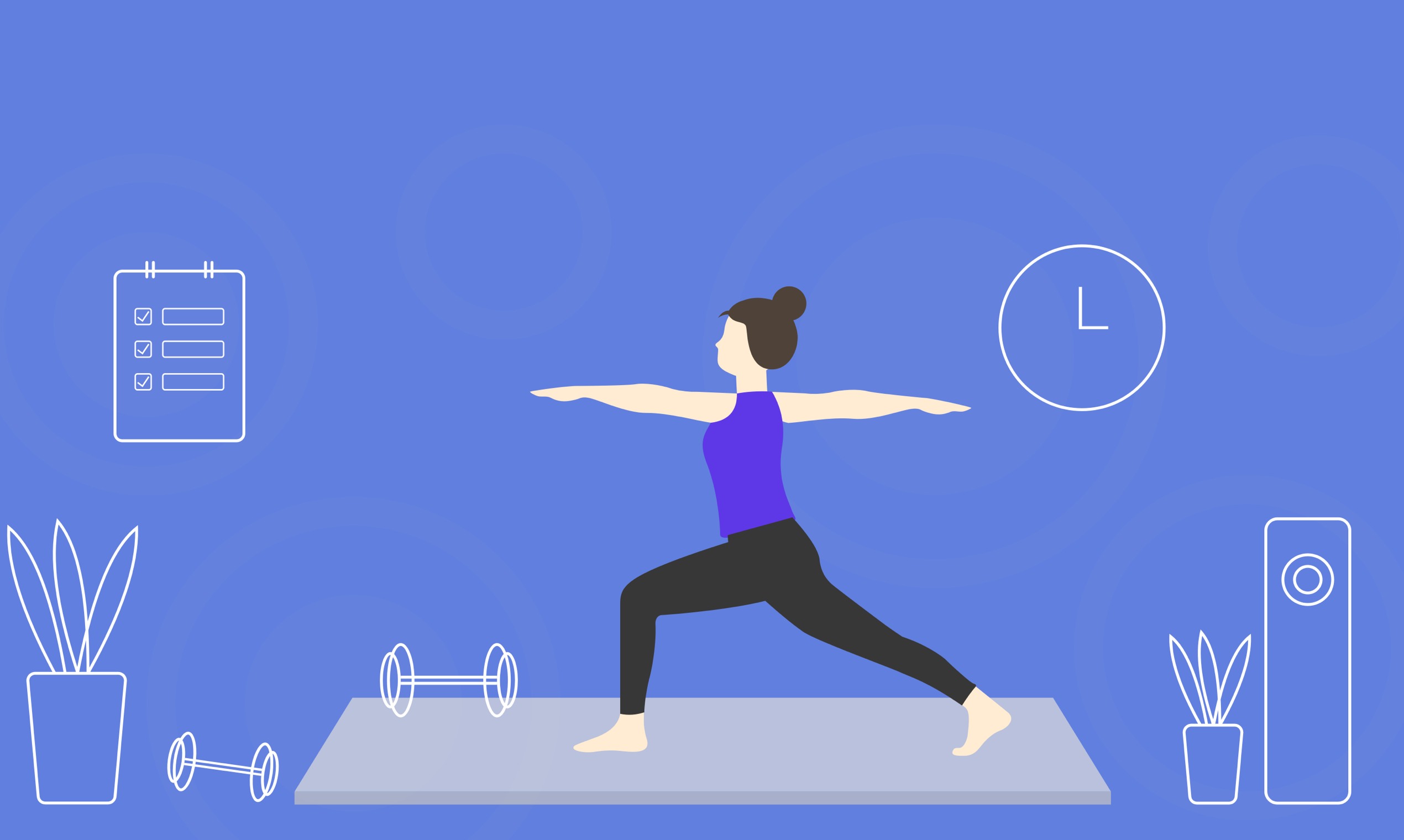
What is the Pomodoro Technique?
The Pomodoro Technique is one of the simplest and most feasible methods of time management, proposed by Francesco Cirillo in 1992. He named it “Pomodoro” (tomato in Italian) just because of the tomato-shaped kitchen timer he used to track time.
Struggling with constantly refilling to-do lists and never-ceasing deadlines like all of us today, Francesco found a way to enhance his concentration and productively get things done as a university student. That is Pomodoro Technique. Every 25-minute is considered as a Pomo, dedicating to a task during the Pomo and taking a 5-minute break when it ends. After 4 Pomos, take a longer break (usually 15-30 minutes). The whole process goes like that. With time, this can train our brain to focus in short and timed intervals, while also ensuring relaxation for quick recharging during work. Therefore, Pomodoro Technique outweighs other productivity methods mainly because it’s distraction-fighting and brain-training.

How to do it?
Pomo Timer was introduced to TickTick a long time ago, and we’ve mentioned this technique several times before, but we’ve never dived into it to see how it can be applied practically into work and life. Let’s do that now.
First of all, Pomodoro Technique ≠ focus + rest. The complete process involves four steps: planning, executing, tracking, and analyzing.
Planning
Planning can be broken down into 2 steps: scheduling and estimating. Writing down everything you need to do, and scheduling tasks for today is the start of preparation. Once scheduled, set estimated Pomo numbers on those tasks. For example:

Tips:
- Split a complex task with more than 7 Pomos into multiple subtasks.
- Combine trivial tasks that are less than a Pomodoro within 1.
Executing
Before you get down to switch on the Pomo timer, there are some simple tips:
- Can I pause the Pomo timer?
Pauses cause interruptions that may make it 10 times harder to start again. Therefore, it is usually recommended to complete a Pomo in one sitting. Pause it only if there’s something urgent.
P.S. In TickTick Focus, the Pomo Timer can be paused (with limited times), and you can choose to continue or end it.
- Can I switch tasks within one Pomo?
Yes, but regular switches between tasks may not be a good way to stay focused. Ideally, doing one thing in one Pomo can contribute to a higher level of concentration.
- How to avoid distractions during Pomo?
Unexpected things usually pop up and distract us away from focusing on the tasks at hand. For example, those external distractions are various in the office, such as phone calls or a colleague’s coffee invitation. To avoid this, White Noise could be something you could at least try. Comparatively, interruptions from ourselves are more subtle, because a random idea can spring up out of nowhere. When this comes, take note of it to be dealt with later, and quickly return to the current Pomo.
- What if I complete the task before the Pomo is over?
What the author of Pomodoro Technique Illustrated suggested is "Over-learning". That is, if there is extra time in a Pomodoro, go back to the completed task to see if there is anything that can be improved.
- How to use TickTick Pomo Timer? (See the illustration below)

Tracking
For athletes and professional gamers, performance tracking is almost as important as three meals a day. Without tracking, you won't be able to know where you went wrong and what to improve. Therefore, don't forget to regularly evaluate your completed Pomos and think about whether you can do better next time. Instead of manually calculating all the numbers, TickTick Focus Statistics provides everything you need, from time spent on individual tasks, a daily Focus record to weekly/monthly trends of your Pomo Performance.

Analyzing
Last but not least, analyzing the data you’ve collected and optimizing the Pomo process for next time. With all in-depth data TickTick Focus provides, some key info needs special attention:
- The gap between estimated time and actual time on each task
Based on the difference between the estimated time and the actual time expenditure on a task, you can gain a fair understanding and make a better estimation next time.
- The number of interruptions and specific contents
According to the number and contents of interruptions, summarize what usually distracted you from being focused, and think about how to avoid similar situations in the future.
- Distribution of your daily focused hours
From this perspective, you can find out your most productive time of the day to suit your workflow best.
Why can it work?
Although sounding effective, you may wonder why Pomodoro Technique can be a productivity booster?
- It creates a sense of ritual: Once getting used to starting being concentrated when the Pomo timer is switched on, our brain will be trained to listen to that command, similarly to a conditional reflex.
- It turns us from being passive to active: The moment you activate the Pomodoro, you have control over your time.
- It ensures a good work-life balance: It leaves time for relaxing and recharging during work. 5-minute breaks in between allow you to temporarily get away from stressful work and let your brain rest.
- It emphasizes optimization: Tracking and analyzing your Focus flow and time expenditure plays a great role in self-growth and reflection. One can get more and more aware of how he/she spent time and how to manage time well.
- It provides instant positive feedback: With the Pomo timer practices, you can not only reap a bunch of tomatoes but also a great sense of accomplishment. This kind of positive feedback keeps you away from negative emotions developed from completing tasks and increases motivation greatly.
Common misuses to avoid
❌ Pomodoro can only be 25 minutes.
✔ Pomodoro can be customized.
Working for 25 minutes + taking a break for 5 minutes is just the author’s suggestion. Customizing a cycle that suits your habits is the correct way to adopt the Pomodoro Technique. If you don't want it to be too fragmented, you can extend your Pomo appropriately; if you feel 25 minutes is too long, you can maybe start with 15 minutes.
❌ I’m super productive because I finished 10+ Pomos today.
✔ The number of Pomos cannot be the only indicator of productivity.
It should be noted that Pomodoro is a tool for improving efficiency rather than quantifying time. The completion of tasks and results are more important than the number of tomatoes!
❌ As long as the Pomo is completed, there is no need to spend time reviewing it.
✔ The analysis of Pomo statistics cannot be omitted.
Taking a few minutes to reflect on how time was spent on different tasks and what time you were most productive can make you perform better in the next execution of Pomo. But it is indeed unnecessary to waste too much time on reflection. Analyzing is suggested to be done within a Pomo.
Fun facts
Francesco Cirillo, the author of The Pomodoro Technique, has also found some fun facts:
- The ideal Pomodoro time is from 20 to 35 minutes, preferably less than 40 minutes.
- The Pomodoro Technique can make people more sensitive to time. Some who have used Pomodoro for a while reported that they could accurately determine whether a Pomo has passed halfway.
- Two types of people are prone to anxiety when using Pomodoro: One is those who procrastinate a lot, and the others are perfectionists. For procrastinators to better execute Pomodoro Technique, the first goal is to complete the first 25-minute Pomodoro without interruption; for those perfectionists, TickTick wants to tell you that starting to do is more important than doing well. Time to reap your first Pomo!


